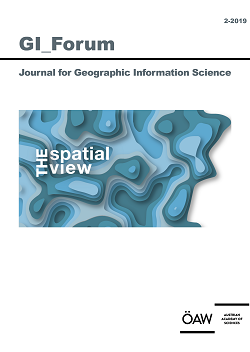Adrijana Car – Thomas Jekel – Josef Strobl – Gerald Griesebner (Eds.)
GI_Forum 2019, Volume 7, Issue 2
Journal for Geographic Information Science
Pablo F. Cabrera-Barona,
Myriam Paredes,
Donald Cole
S. 10 - 23
doi:
10.1553/giscience2019_02_s10
Verlag der Österreichischen Akademie der Wissenschaften
doi:
10.1553/giscience2019_02_s10
Abstract:
This paper identifies spatial patterns of body mass index (BMI) and obesity in the Metropolitan District of Quito, Ecuador, by applying spatial autocorrelation. We identified BMI hotspots in western rural parishes, and hotspots of obesity in northern urban parishes. We then explored associations between distances to food outlets, physical activity and smoking (independent variables), and BMI and obesity (BMI > 30) (dependent variables) by applying global regressions (GR) and geographical weighted regressions (GWR). Smoking was found to be significantly negatively associated with BMI and obesity. Distance to supermarkets was found to be negatively associated with obesity.
BMI, obesity, smoking, physical activity, food outlets
Published Online:
2019/12/11 13:04:53
Object Identifier:
0xc1aa5576 0x003b1713
Rights:https://creativecommons.org/licenses/by-nd/4.0/
GI_Forum publishes high quality original research across the transdisciplinary field of Geographic Information Science (GIScience). The journal provides a platform for dialogue among GI-Scientists and educators, technologists and critical thinkers in an ongoing effort to advance the field and ultimately contribute to the creation of an informed GISociety. Submissions concentrate on innovation in education, science, methodology and technologies in the spatial domain and their role towards a more just, ethical and sustainable science and society. GI_Forum implements the policy of open access publication after a double-blind peer review process through a highly international team of seasoned scientists for quality assurance. Special emphasis is put on actively supporting young scientists through formative reviews of their submissions. Only English language contributions are published.
Starting 2016, GI_Forum publishes two issues a Year.
Joumal Information is available at: GI-Forum
GI_Forum is listed on the Directory of Open Access Journals (DOAJ)




 Home
Home Print
Print
 References
References
 Share
Share
